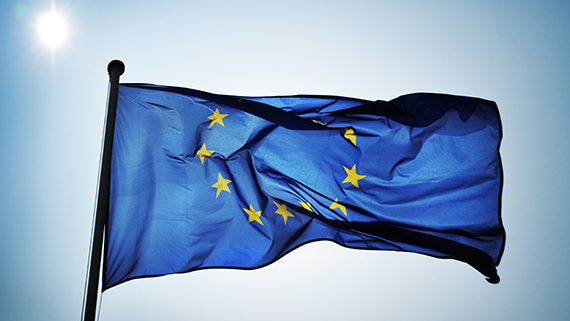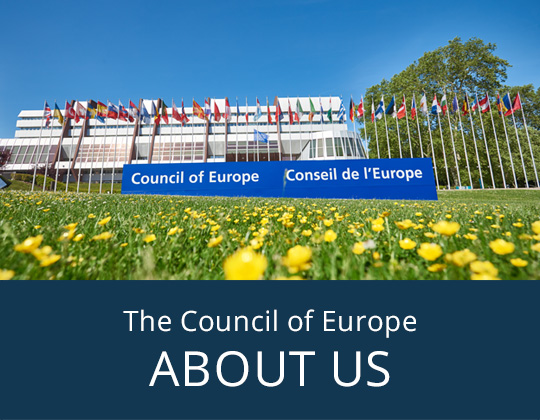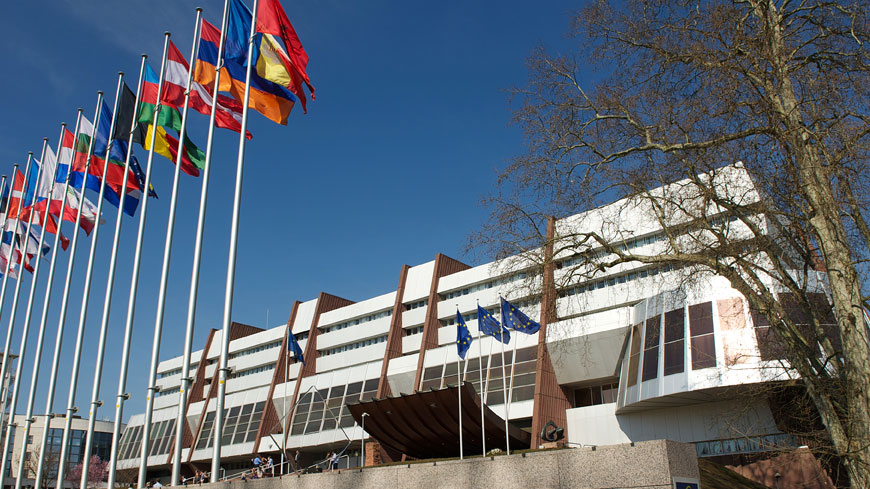Europejska Flaga

Od jej założenia w 1949 r. Rada Europy miała świadomość istnienia potrzeby dania Europie symbolu, z którym jej mieszkańcy mogliby się utożsamiać. W dniu 25 października 1955 r. Zgromadzenie Parlamentarne jednogłośnie zaakceptowało symbol okręgu ze złotych gwiazd na niebieskim tle. W dniu 9 grudnia 1955 r. Komitet Ministrów organizacji przyjął gwiaździstą flagę, która została oficjalnie ogłoszona w dniu 13 grudnia tego samego roku w Paryżu.
Symbol całej Europy
W 1983 r. z kolei Parlament Europejski przyjął flagę opracowaną przez Radę Europy i zalecił, by stała się ona godłem wspólnot europejskich. Rada Europejska dała swoją zgodę w czerwcu 1985 r. Instytucje Unii Europejskiej zaczęły używać flagę w 1986 r.

 History of the European flag
History of the European flag
 Imagine the European flag
Imagine the European flag
The European flag we know today—a circle of twelve gold stars on a deep blue background—was chosen for its perfect blend of neutrality, timelessness, and simplicity. Its design avoids religious or national symbols, embracing universal ideals of unity and harmony. The number 12, a symbol of perfection and stability, ensures the flag remains unchanged regardless of Europe’s growth. And its clean, elegant design is instantly recognisable and easy to reproduce.
But did you know this iconic flag was nearly completely different? The journey to its final form involved several intriguing alternatives. Let’s explore the fascinating alternative designs that could have represented Europe!
Alternative designs for the European flag
The journey to the European flag’s final design—a circle of twelve gold stars on a serene blue background—this iconic symbol, was filled with creative possibilities and alternative designs, each with its own unique vision for representing Europe’s unity in diversity.
Let’s explore some of the alternative ideas that were considered!
Cross designs
Some of the early ideas featured a gold cross on a blue background, reflecting Europe’s shared Christian heritage.
There were variations too, like single or multiple cross designs, but these were seen as potentially divisive in such a religiously diverse continent.
Stars on different backgrounds
Designs with stars on green, white, or red backgrounds were proposed.
Another concept had stars on a white background, but it felt too similar to existing national flags and lacked uniqueness.
The number of stars
Early designs featured a star for each member state of the Council of Europe (initially 15).
Concerns arose that the number would need to change as new members joined, leading to confusion.
Design by Arsène Heitz
Arsène Heitz, the designer of the final flag, originally proposed a design with a crown of stars surrounding a blue background.
Some designs included religious imagery, like references to the Virgin Mary, but these were set aside to keep the flag secular.
Circle vs. other shapes
Some proposals featured stars arranged in arcs, rows, or patterns other than a circle.
Ultimately, the circle of stars won out for its powerful symbolism of unity and equality, steering clear of any hierarchy.
Colour choices
Different colour combinations, including red, green, and gold, were tested for their visual impact and symbolism.
Blue and gold were selected for their association with peace, harmony, and historical ties to European heraldry.
Curious to see what might have been? Take a closer look at the alternative design proposals for the European flag here
Copyright
Any natural or legal person (‘user') may use the European emblem or any of its elements, subject to the following conditions of use.
Conditions of use
The use of the European emblem and/or any of its elements is allowed, irrespective of whether the use is of a non-profit or commercial nature, unless:
(a) the use creates the incorrect impression or assumption that there is a connection between the user and any of the institutions, bodies, offices, agencies and organs of the European Union or the Council of Europe;
(b) the use leads the public to believe erroneously that the user benefits from the support, sponsorship, approval or consent of any of the institutions, bodies, offices, agencies and organs of the European Union or the Council of Europe;
(c) the use is in connection with any objective or activity which is incompatible with the aims and principles of the European Union or of the Council of Europe, or which would be otherwise unlawful.
Trade mark and related issues
The use of the European emblem in accordance with the conditions in the previous section does not mean consent to registration of the emblem or an imitation thereof as a trade mark or any other IP right. The European Commission (embl@ec.europa.eu) and the Council of Europe (legal.advice@coe.int) will continue the monitoring of applications for registration of the European emblem or part thereof as (part of) IP rights, in accordance with the applicable legal provisions.

Did you know?
The Council of Europe Anti-Doping Convention adopted in 1989 is the only international legal instrument in this area to date.
Gdzie znajduje się siedziba Rady Europy?





